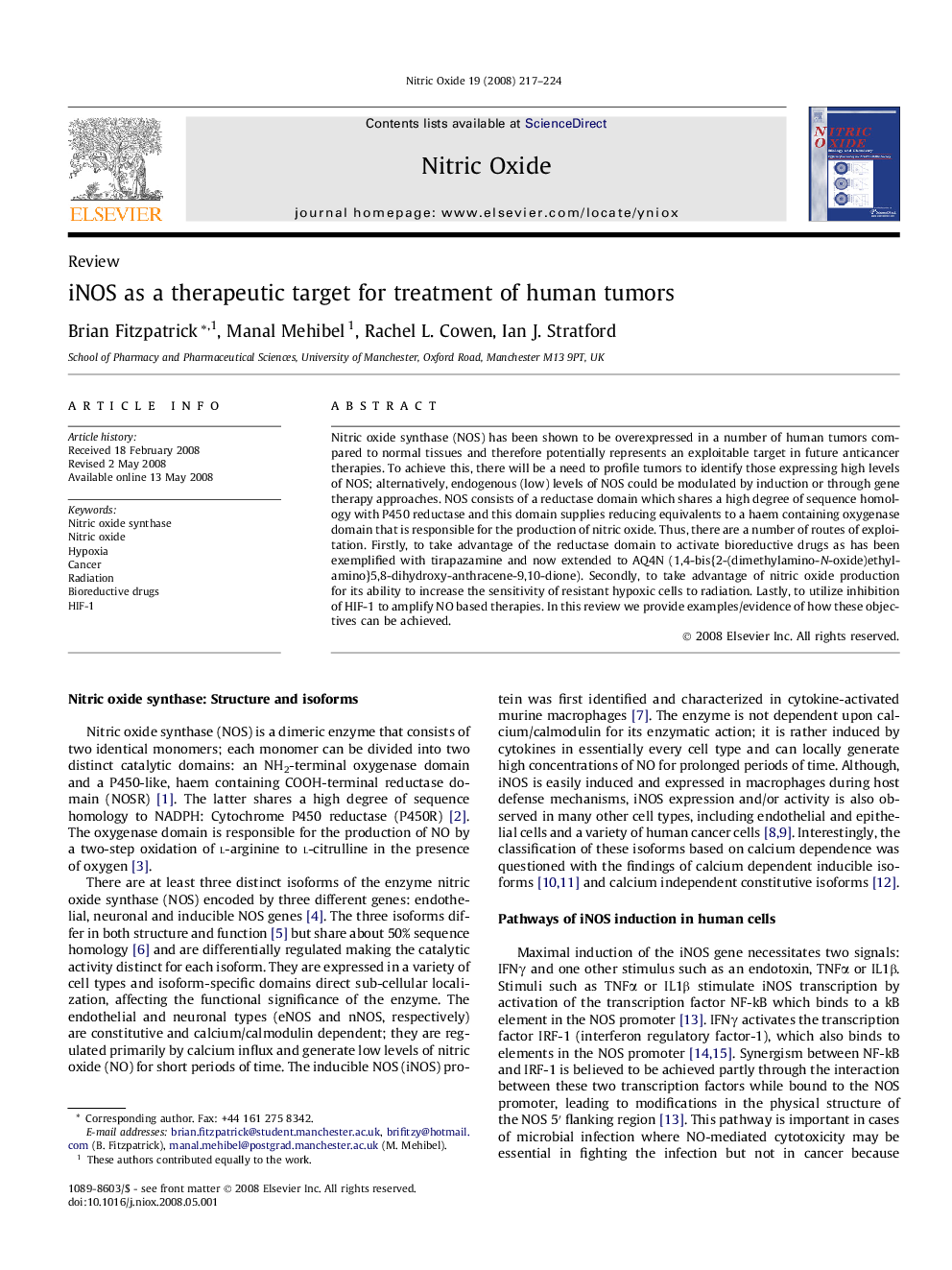| Article ID | Journal | Published Year | Pages | File Type |
|---|---|---|---|---|
| 2001401 | Nitric Oxide | 2008 | 8 Pages |
Nitric oxide synthase (NOS) has been shown to be overexpressed in a number of human tumors compared to normal tissues and therefore potentially represents an exploitable target in future anticancer therapies. To achieve this, there will be a need to profile tumors to identify those expressing high levels of NOS; alternatively, endogenous (low) levels of NOS could be modulated by induction or through gene therapy approaches. NOS consists of a reductase domain which shares a high degree of sequence homology with P450 reductase and this domain supplies reducing equivalents to a haem containing oxygenase domain that is responsible for the production of nitric oxide. Thus, there are a number of routes of exploitation. Firstly, to take advantage of the reductase domain to activate bioreductive drugs as has been exemplified with tirapazamine and now extended to AQ4N (1,4-bis{2-(dimethylamino-N-oxide)ethylamino}5,8-dihydroxy-anthracene-9,10-dione). Secondly, to take advantage of nitric oxide production for its ability to increase the sensitivity of resistant hypoxic cells to radiation. Lastly, to utilize inhibition of HIF-1 to amplify NO based therapies. In this review we provide examples/evidence of how these objectives can be achieved.
